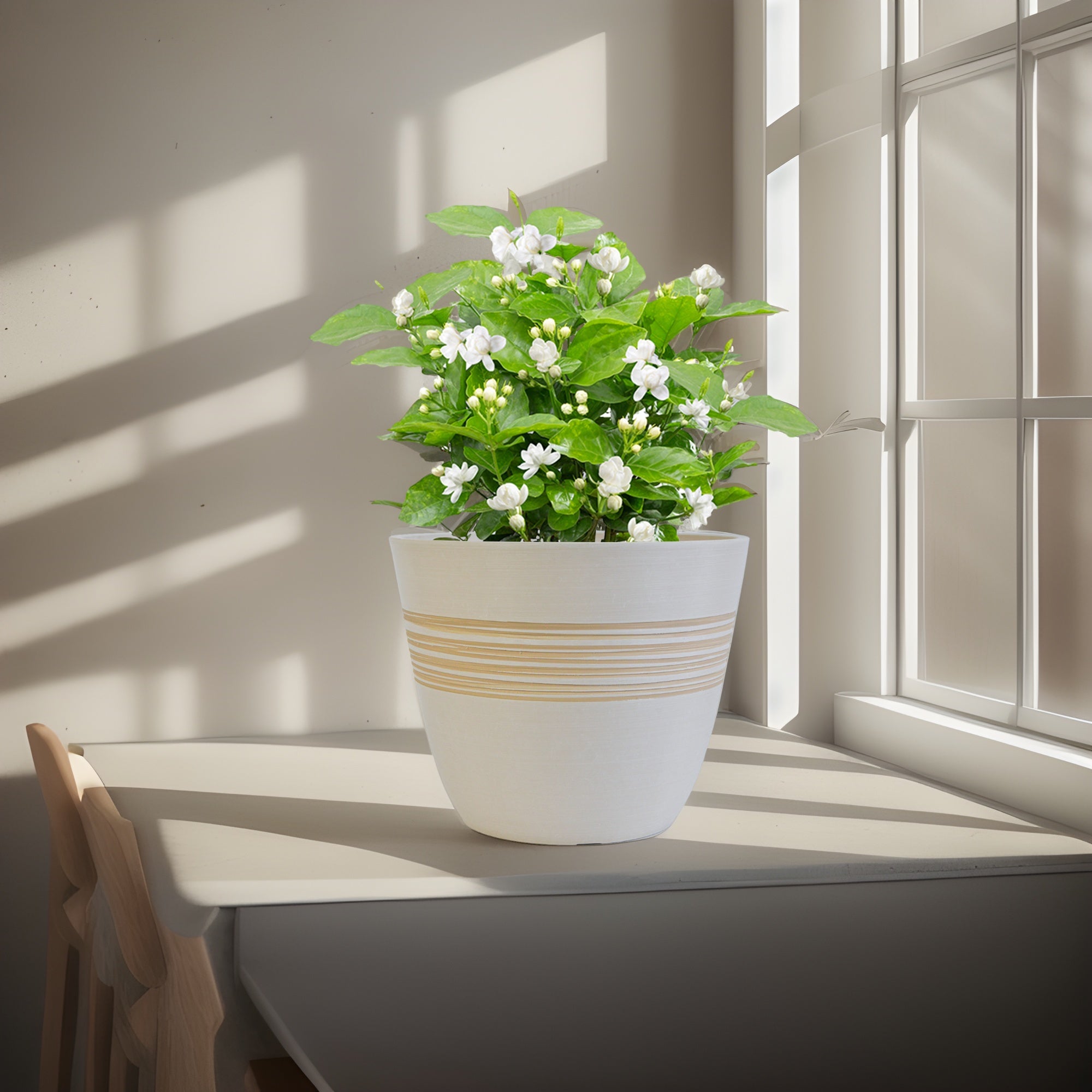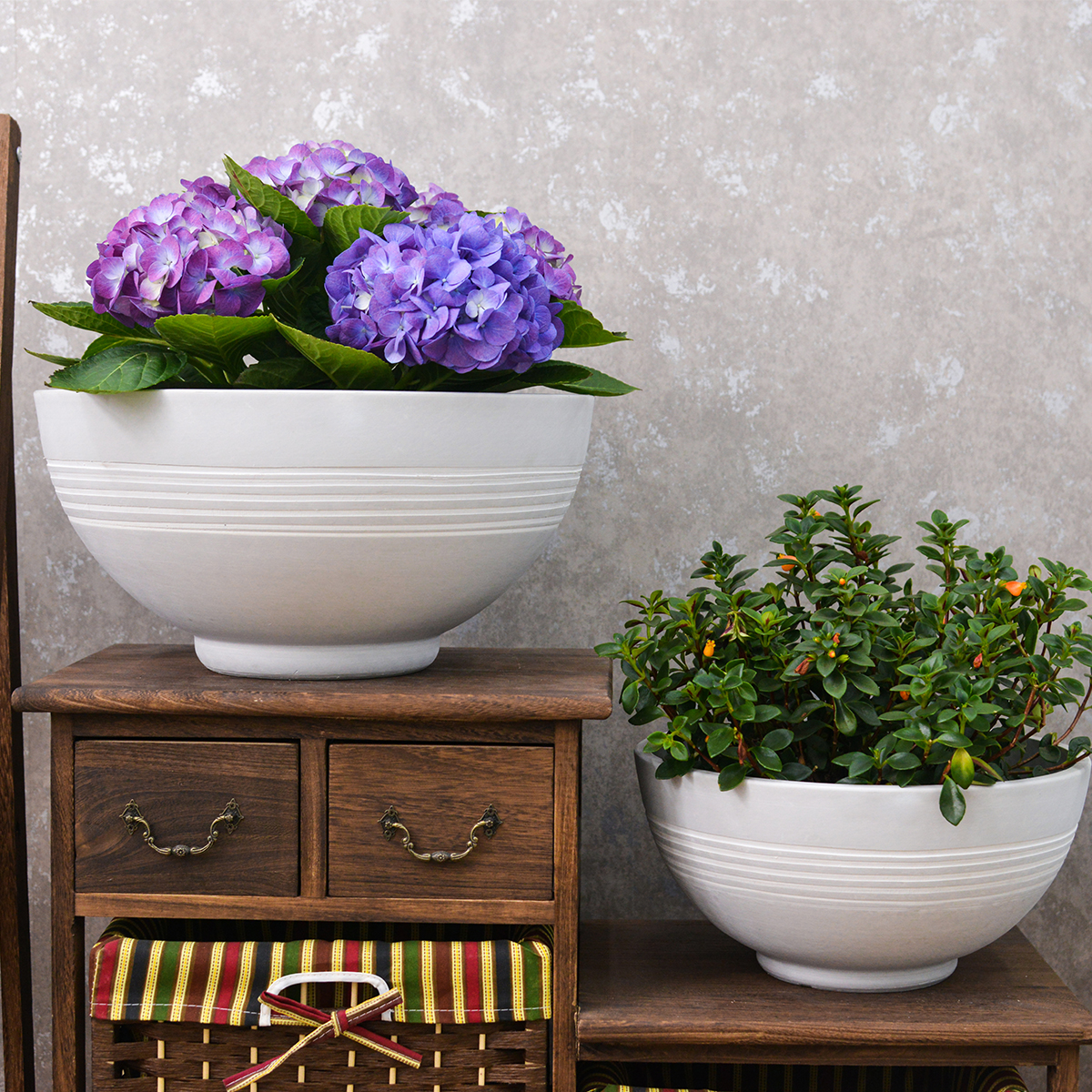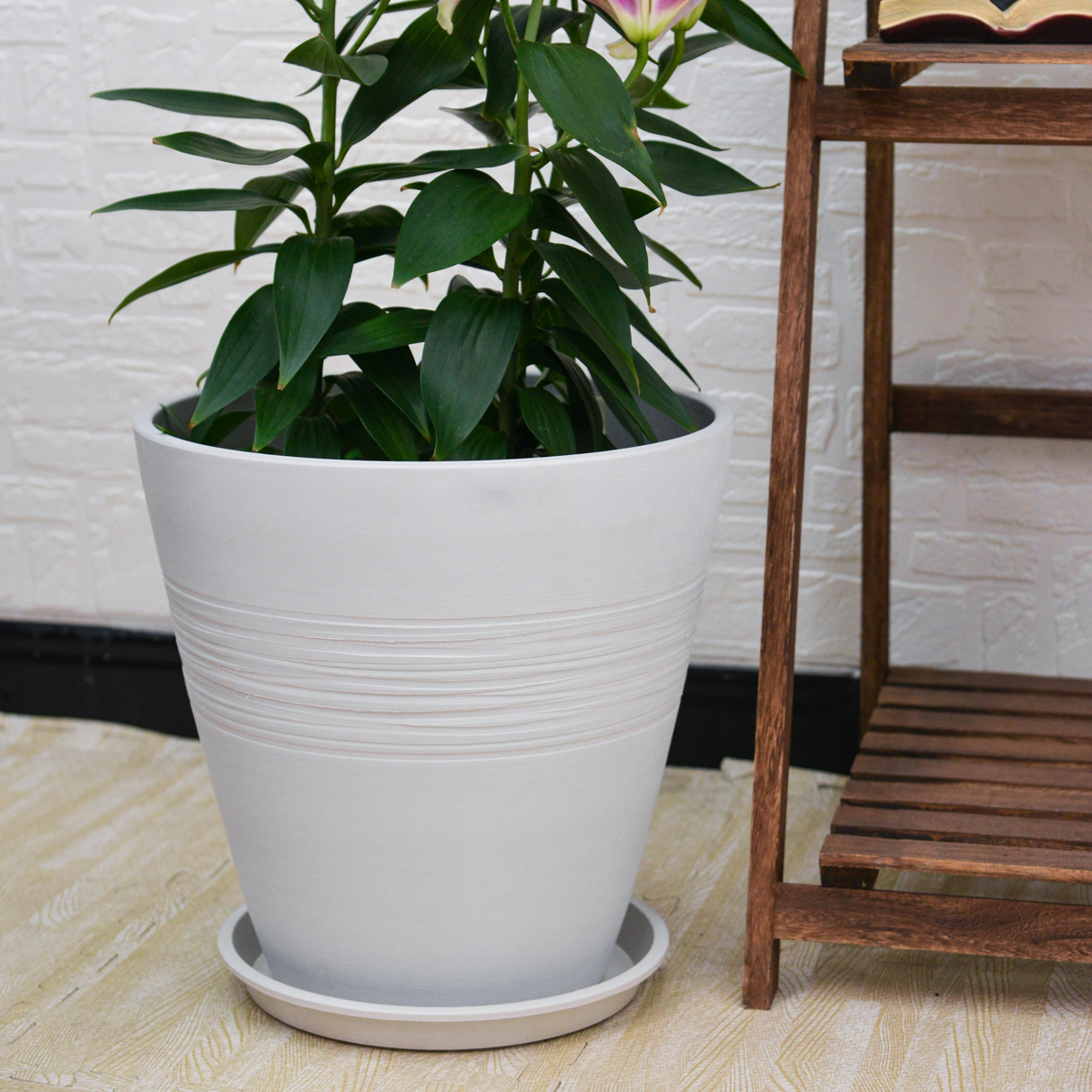Marigolds in Pots: The Ultimate Guide to Cheerful Container Gardening with Marigolds
Want to infuse your outdoor spaces with sunshine and vibrant color? Marigolds are a quintessential choice for cheerful outdoor container gardening, celebrated for their bright, daisy-like blooms, ease of growth, and pest-repellent properties. From classic French marigolds to tall African marigolds and charming signet types, there’s a marigold for every pot and garden style. This comprehensive guide will provide you with everything you need to know to grow marigolds successfully in outdoor pots, from selecting the best varieties and containers to mastering essential care techniques for a season-long display of marigold sunshine.
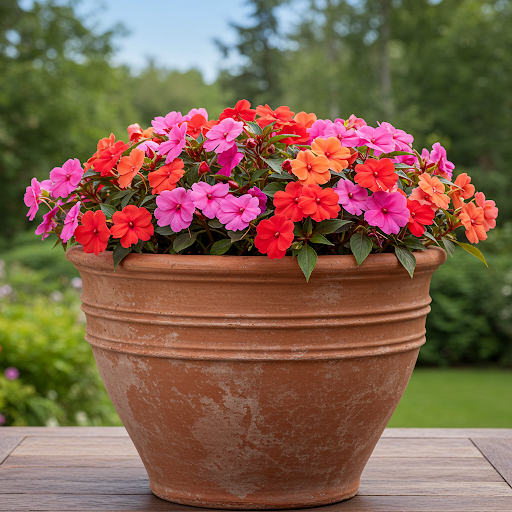
Marigolds
What are Marigolds (Tagetes)?
Marigolds (Tagetes) are a genus of annual and perennial flowering plants belonging to the daisy family, Asteraceae. Native to the Americas, particularly Mexico and Central and South America, marigolds are beloved annual bedding plants worldwide, prized for their bright, cheerful blooms and easy-care nature. Marigold flowers are typically daisy-like or pompom-shaped and come in warm, sunny colors, including shades of yellow, orange, red, and bi-colors. They are broadly categorized into types such as African Marigolds (Tagetes erecta), French Marigolds (Tagetes patula), and Signet Marigolds (Tagetes tenuifolia). Marigolds are cherished for their long blooming season, vibrant colors, pest-repellent qualities (especially against nematodes and some insects), and ability to attract pollinators like bees and butterflies, making them a valuable and beautiful addition to any container garden or landscape.
Are Marigolds (Tagetes) Good for Outdoor Pots?
Yes, Marigolds (Tagetes) are excellent for outdoor pots and container gardening. Their compact, bushy, and sometimes dwarf growth habits make them perfectly suited for filling pots, window boxes, and patio containers with bright, sunny color. Marigolds thrive in sunny locations and bloom profusely throughout the summer and into fall, providing a long-lasting and cheerful display in containers. Their adaptability, pest-repellent qualities, and wide variety of types make them a versatile and practical choice for container gardens of all styles, especially for adding low-maintenance color to sunny patios, balconies, and decks.
Ideal Growing Conditions for Marigolds (Tagetes) in Pots:
- Types of Marigolds for Pots: All types of marigolds are suitable for pots, but some are particularly popular and well-suited for container displays. Consider these cheerful marigold types for your pots:
- French Marigolds (Tagetes patula): Compact and bushy, typically 6-12 inches tall, with smaller, often double flowers. Known for their bushy habit, early blooming, and tolerance of slightly poorer soils. Excellent for edging, borders, window boxes, and general container planting. Varieties include single, double, crested, and anemone-flowered types.
- African Marigolds (Tagetes erecta): Taller and more upright, typically 1-3 feet tall, with large, pompom-like flowers. Also known as American marigolds or Aztec marigolds. Best for adding height and drama to containers, and for use as “thrillers” in mixed arrangements. Varieties include tall, dwarf, and ruffled types.
- Signet Marigolds (Tagetes tenuifolia): Finely textured foliage and masses of small, single, daisy-like flowers. Very heat and drought-tolerant, and edible flowers with a citrusy flavor. Excellent for cascading over pot edges, window boxes, and herb gardens. Varieties are typically low-growing and spreading.
- Triploid Marigolds (Tagetes x erecta x patula): Hybrids that combine the best traits of African and French marigolds, offering larger flowers than French marigolds and better weather tolerance and disease resistance than African marigolds. Often sterile, resulting in very long bloom times.
- Light: Marigolds need full sun to thrive and bloom profusely. They require at least 6-8 hours of direct sunlight per day to produce abundant flowers and maintain vibrant colors. Locations with morning sun and afternoon shade can also work, but full sun is best for maximum flowering. Insufficient light will result in fewer blooms, leggy growth, and faded colors. Choose a sunny spot for your marigold containers.
- Soil: Marigolds are not fussy about soil and can tolerate a wide range of soil types, but they prefer well-draining soil that is moderately fertile. Use a good quality potting mix specifically formulated for containers or flowers. Avoid overly rich or heavily fertilized soils, as this can promote foliage growth at the expense of flowers. A standard potting mix amended with a bit of compost is suitable. Good drainage is more important than rich soil for marigolds in pots.
- Watering: Marigolds are relatively drought-tolerant once established, but they perform best with consistent moisture, especially when grown in pots. Water thoroughly when the top inch of soil feels dry. Water deeply until water drains out of the drainage holes. Allow the soil to slightly dry out between waterings. Avoid overwatering and soggy soil, which can lead to root rot. Marigolds are more tolerant of slightly dry conditions than consistently wet soil. Water less frequently in cooler weather or shade. Check soil moisture regularly and adjust watering frequency based on weather conditions and pot size. Water at the base of the plant to keep foliage and flowers dry and help prevent fungal diseases.
- Temperature: Marigolds are warm-weather annuals and thrive in warm temperatures. They perform best in temperatures between 65°F to 90°F (18°C to 32°C). They are sensitive to frost and cold temperatures. Plant marigolds outdoors after the last frost in your area, and when soil temperatures have warmed up. They tolerate heat well and continue to bloom through hot summer weather.
- Fertilizer: Marigolds are not heavy feeders and generally do not require excessive fertilization. Light fertilizationcan be beneficial, especially for continuous blooming in pots. Fertilize monthly or bi-monthly during the growing season with a balanced liquid fertilizer (e.g., 10-10-10 or 20-20-20) diluted to half strength, or a fertilizer specifically formulated for flowering annuals. Avoid high-nitrogen fertilizers, which can promote leafy growth at the expense of flowers. Over-fertilizing is generally more detrimental to marigold flowering than under-fertilizing.
Choosing the Right Pots for Marigolds (Tagetes):
- Suitable Pot Types: Marigolds are adaptable to various pot types, including terracotta, ceramic, plastic, resin, and window boxes. Consider these factors when selecting pot types for marigolds:
- Terracotta Pots: Porous, allow good aeration and drainage, and aesthetically classic, but dry out more quickly, requiring more frequent watering, especially in hot weather. Well-suited for marigolds, especially French and Signet types that prefer slightly drier conditions.
- Ceramic Pots: Available in many decorative styles, retain moisture better than terracotta, and can add a decorative element to your container garden. Ensure good drainage. Good for African marigolds and mixed arrangements.
- Plastic Pots: Lightweight, inexpensive, retain moisture well, available in various colors and styles. Choose good quality plastic pots that are durable and UV-resistant. Good for all marigold types, especially for larger plantings and window boxes.
- Resin Pots: Lightweight, durable, available in various styles mimicking terracotta or ceramic, and retain moisture well. A good alternative to heavy ceramic pots, and often offer better moisture retention than terracotta.
- Window Boxes & Long Planters: Excellent for mass plantings of French and Signet marigolds on windowsills, railings, or as porch planters. Choose boxes with good drainage and sufficient depth.
- Drainage: Good drainage is essential for marigolds to prevent root rot. Ensure your chosen pot has drainage holes at the bottom. Avoid pots without drainage holes. Elevating pots slightly can improve drainage and air circulation around the base. Adding a layer of gravel or pot shards at the base of the pot is generally not necessary if using a well-draining potting mix, but can be done for extra precaution, especially in very heavy pots or mixes.
- Pot Size: Choose pot sizes appropriate for the type and mature size of the marigold you are planting.
- French Marigolds: For French marigolds, pots that are 6-8 inches in diameter are suitable for individual plants. For fuller displays or multiple plants, use pots that are 10-12 inches or larger, or window boxes.
- African Marigolds: African marigolds are taller and need slightly larger pots. Use pots that are 8-12 inches in diameter for individual plants, and larger for mixed containers or to accommodate multiple plants.
- Signet Marigolds: Signet marigolds are more spreading and can be planted in smaller pots if desired, but they also look great cascading from larger containers and window boxes. Pots that are 6-8 inches in diameter are suitable for individual plants, and larger pots or window boxes for fuller displays.
- Depth: Ensure pots are at least 6-8 inches deep for French and Signet marigolds, and 8-10 inches deep for African marigolds to provide adequate root space.
- Color and Style: Choose pot colors and styles that complement your marigold blooms and your outdoor décor. Terracotta pots enhance the natural, sunny look of marigolds, while brightly colored pots can create a more vibrant and playful display. Yellow, orange, or red pots can echo the warm tones of marigold flowers.
Essential Care Tips for Thriving Marigolds (Tagetes) in Outdoor Pots:
- Watering: “Water When Topsoil is Dry, Avoid Overwatering”. Water thoroughly when the top inch of soil feels dry. Allow the soil to slightly dry out between waterings. Avoid overwatering and soggy soil. Water less frequently in cool or cloudy weather.
- Sunlight: Provide Full Sun. Place marigold pots in a location that receives at least 6-8 hours of direct sunlight daily.
- Fertilizing: Fertilize Lightly, Monthly or Bi-Monthly. Fertilize monthly or bi-monthly with a balanced liquid fertilizer or flowering plant fertilizer to encourage continuous blooming. Avoid over-fertilizing.
- Deadheading (Encourage More Blooms & Tidiness): Deadhead spent or faded flowers regularly to encourage more blooms and keep plants looking tidy. Pinch or snip off dead flower heads right below the flower. Regular deadheading promotes continuous flowering in marigolds.
- Pinching Back (Promote Bushiness – Optional): Pinch back leggy stems or overgrown marigolds to encourage branching and bushier growth, especially for taller African marigolds. Pinching back stem tips can create more compact and floriferous plants.
- Pest and Disease Control: Marigolds are generally relatively pest and disease-resistant, and are even known for their pest-repellent properties. However, monitor for common pests like spider mites, aphids, and snails/slugs. Powdery mildew and botrytis blight can occur, especially in humid conditions or with poor air circulation. Ensure good air circulation, avoid overcrowding, water at the base of the plant, and treat any pest or disease issues promptly with insecticidal soap, horticultural oil, neem oil, or appropriate fungicides if necessary.
- Edible Flowers (Signet Marigolds): Signet marigold flowers are edible and have a citrusy flavor. Use them fresh in salads, as garnishes, or in other culinary applications. Harvest flowers when fully open.
Popular Marigold Cultivars for Pots (by Type):
- French Marigolds (Tagetes patula): ‘Safari Series’, ‘Durango Series’, ‘Bonanza Series’, ‘Disco Series’
- African Marigolds (Tagetes erecta): ‘Inca II Series’, ‘Marvel Series’, ‘Perfection Series’, ‘Crackerjack Series’
- Signet Marigolds (Tagetes tenuifolia): ‘Lemon Gem’, ‘Orange Gem’, ‘Red Gem’, ‘Goldie’
- Triploid Marigolds (Tagetes x erecta x patula): ‘Zenith Series’, ‘Hot Pak Series’, ‘Taishan Series’
In Summary:
Growing Marigolds (Tagetes) in outdoor pots is a simple and wonderfully rewarding way to add cheerful, sunny color and pest-repelling benefits to your outdoor living spaces. Their easy-care nature, drought tolerance, and long blooming season make them a perfect choice for container gardeners of all levels. By providing full sun, well-draining potting mix in pots with drainage, watering appropriately and allowing the soil to slightly dry between waterings, fertilizing lightly, and deadheading spent blooms, you can easily cultivate stunning marigold displays in pots and enjoy their sunny charm and garden benefits all season long.
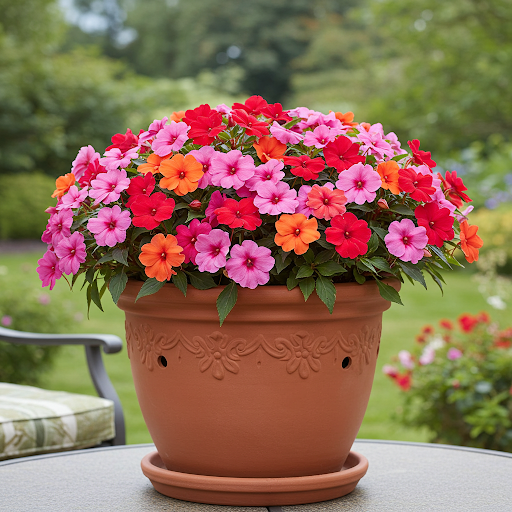
Marigolds
For more detailed botanical information and to explore the diverse world of Tagetes varieties, you can visit the Wikipedia page on Tagetes.
Important Note: Marigolds (Tagetes) are considered non-toxic to humans and pets, making them a safe choice for households with children and animals. The primary care benefits of marigolds in pots include their pest-repellent properties, ease of growth, and low maintenance needs. With these simple care practices, you can enjoy a season filled with the cheerful color and garden benefits of marigolds in your outdoor containers.
HS
By greenship|2024-08-13T06:45:17+00:00August 13, 2024|Categories: Hand-carving Series|
KC2-11V
By greenship|2024-08-16T05:39:50+00:00August 16, 2024|Categories: Hand-carving Series|
Planter for Indoor Outdoor Plants, Set of 2 Modern Decorative Plant Pots with Drainage Hole, Decorative Flower Pots
By greenship-seo|2025-04-10T07:46:01+00:00January 9, 2025|Categories: Hand-carving Series|Tags: Decorative Flower Pots, Self-Watering Pots|
KC3-09k
By greenship|2024-08-16T06:24:36+00:00August 16, 2024|Categories: Hand-carving Series|
KC2-GS
By greenship|2024-08-16T06:30:21+00:00August 16, 2024|Categories: Hand-carving Series|
20T
By greenship|2024-08-13T06:42:22+00:00August 13, 2024|Categories: Hand-carving Series|



